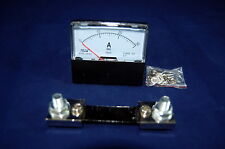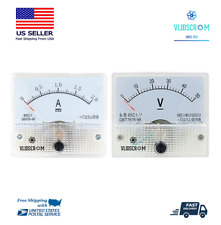
According to a United Nations Population Fund report released Nov. 7, water use has grown six-fold over the past 70 years. “Water may be the resource that defines the limits of sustainable development,” the report notes.
A new study issued by researchers at Scripps Institution of Oceanography at the University of California, San Diego, argues that particles of human-produced pollution may be playing a significant role in weakening Earth’s water cycle, much more than previously realized. The study was funded in part by NASA and used new satellite data from NASA’s Terra satellite revealing the global nature of the particles.
Tiny aerosols primarily made up of black carbon, the authors argue, can lead to a weaker hydrological cycle, which connects directly to water availability and quality, a major environmental issue of the 21st century.
“Initially we were seeing aerosols as mainly a cooling agent, offsetting global warming. In this article we are saying that perhaps an even bigger impact of aerosols is on the water budget of the planet,” said Scripps Professor V. Ramanathan, who along with Professor Paul Crutzen, a co-author of the new study, led the INDOEX science team as co-chief scientists. “Through INDOEX we found that aerosols are cutting down sunlight going into the ocean. The energy for the hydrological cycle comes from sunlight.
As sunlight heats the ocean, water escapes into the atmosphere and falls out as rain. So as aerosols cut down sunlight by large amounts, they may be spinning down the hydrological cycle of the planet.”
The fourth co-author of the paper, Daniel Rosenfeld, also notes that these aerosol particulates may be suppressing rain over polluted regions. Within clouds, aerosols can limit the size of cloud droplets, stifling the development of the larger droplets required for efficient raindrops.
The INDOEX project involved more than 150 scientists across several disciplines from Austria, France, Germany, India, Maldives, the Netherlands, Sweden, and the United States. The $25 million project, sponsored by the National Science Foundation and funded in part by NASA, the Department of Energy, and the National Oceanic and Atmospheric Administration, focused on the Indian Ocean region in a “multiplatform” analysis approach of satellites, aircraft, ships, surface stations, and balloons. The project was designed to assess the nature and magnitude of the chemical pollution over the tropical Indian Ocean and to assess the significance of the region’s aerosols.
A wide range of results from the project –from meteorology to chemistry — are presented in 25 papers published in a special issue of the Journal of Geophysical Research hreleased Nov. 27.
Early in the project, INDOEX researchers documented a human-produced brownish-gray haze layer of about 10 million square kilometers over the Indian-Asian region. The particles within the haze, the researchers discovered, were causing a three-fold decrease in solar radiation reaching the earth’s surface as compared with the top of the atmosphere. The aerosols, typically in the submicrometer- to micrometer-size range, were a mixture of sulfates, nitrates, organic particles, fly ash, and mineral dust, formed by fossil fuel combustion and rural biomass burning.
“One of the key revelations from INDOEX is that air pollution is not only an industrial phenomenon,” said Scripps Professor Crutzen, 1995 Nobel Laureate. “The part of the atmosphere that you would expect to be the cleanest — the areas without a lot of industrialization — in fact can be very highly polluted, especially during the dry season.”
In the new Science paper, Ramanathan, Crutzen, J.T. Kiehl (National Center for Atmospheric Research), and Rosenfeld (The Hebrew University of Jerusalem), say the aerosol issues raised from INDOEX are a “major environmental concern.” Not only do they question the role aerosols are playing on the regional and global hydrological cycle, but, they say, globally averaged, the aerosol increases the solar heating of the atmosphere accompanied by a reduction in the solar heating of the surface of the planet and these effects maybe quite comparable with the forcing due to greenhouse gases.
“At present these effects are not generally accounted for in climate model prediction studies, but we will need to include the absorbing aerosols in future model predictions,” said Kiehl.
The immediate next step, the authors argue, is to develop a reliable global inventory of aerosol emission rates, life times, and concentrations. Integrating innovative new satellite observations, field experiments, and laboratory studies with models will pave the way for breakthroughs in our understanding of aerosols and how they are modifying the environment, they say.
“Part of these results are important for creating awareness,” said Crutzen. “The biomass burning in the countries that are producing this pollution cannot go on.” In addition to the National Science Foundation, the Science study was funded by the Department of Energy and NASA.


















Comments are closed.